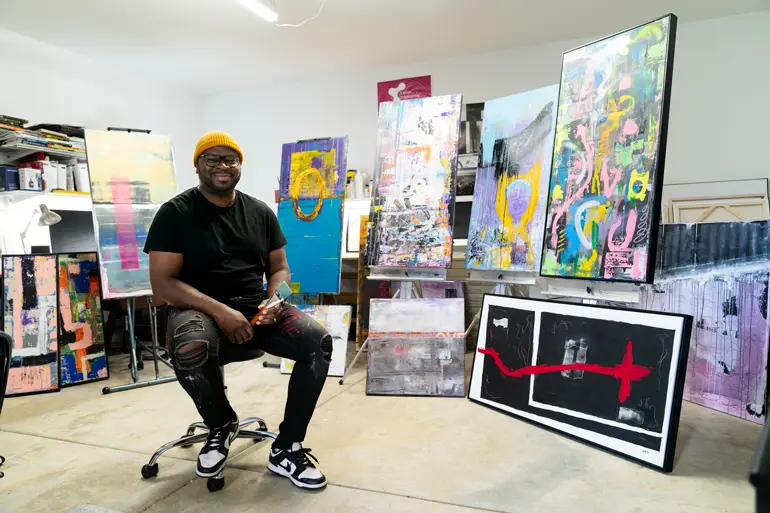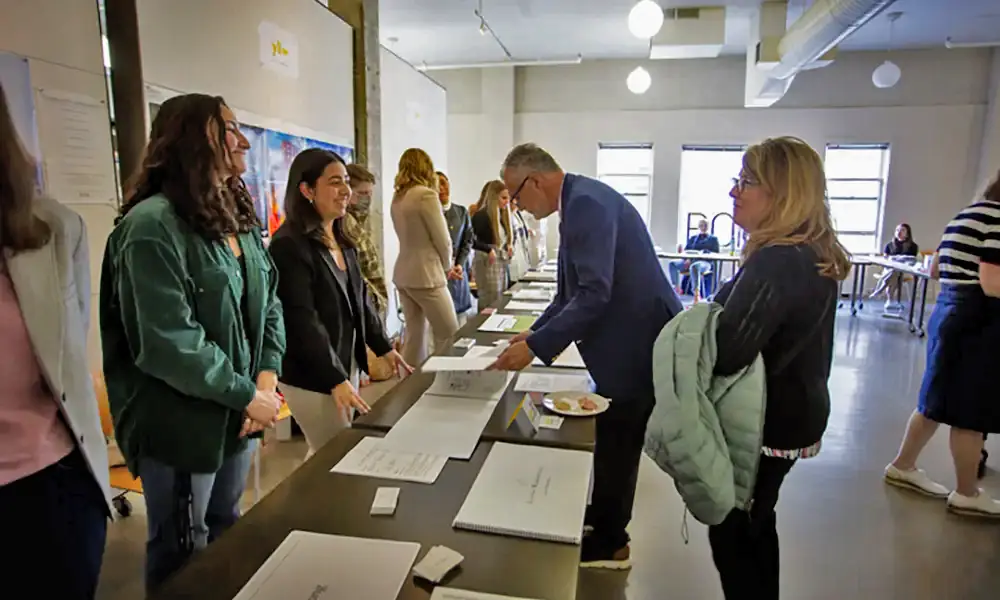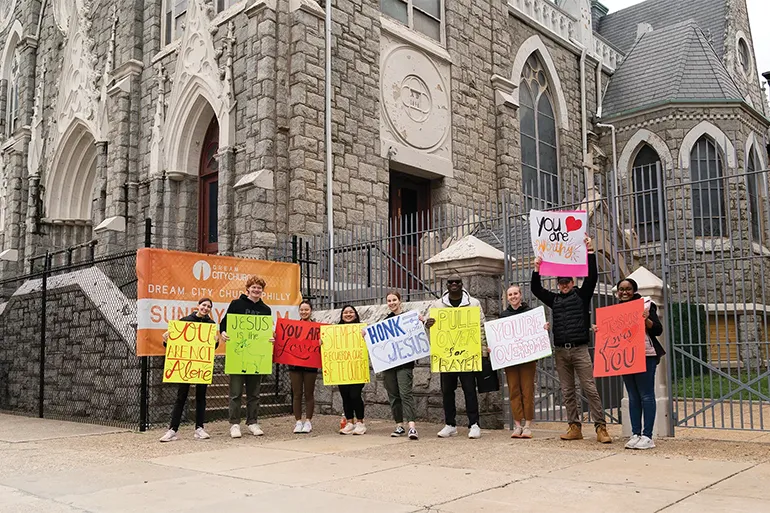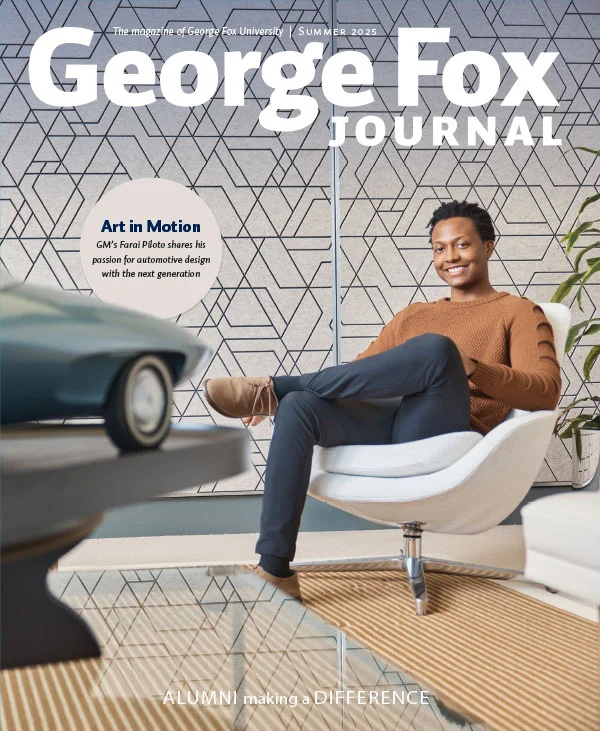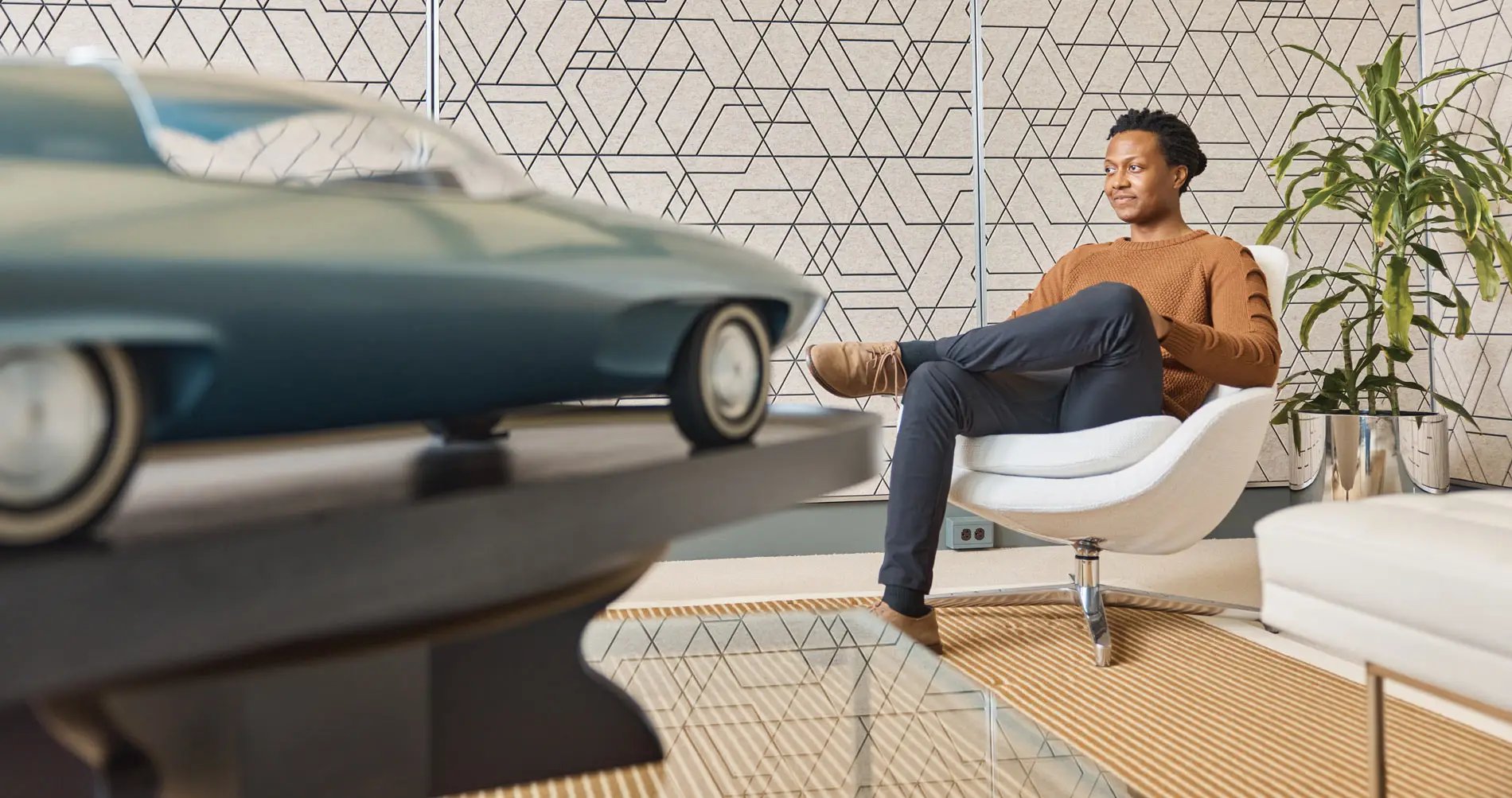

Art in Motion
Alumni Making a Difference
Farai Piloto Creative Digital Sculptor, General Motors
Farai Piloto’s educational journey transformed a passion into a profession – a passion he now shares with the next generation of aspiring artists
Farai Piloto was always a curious kid, asking endless questions and trying to figure out how things worked. He loved to build things, too. “As a child, I used to build mock-ups out of paper or anything else I could find to create infrastructure for my toys, like cities and roads,” he says. He moved on to creating three-dimensional airplanes and then through video games fell in love with designing cars.
Piloto’s passion for design led him to George Fox University, where he pursued a degree in art and design with a concentration in studio art, graduating in 2017. With the encouragement of university professors, he went on to earn a second degree in transportation design from the ArtCenter College of Design in Pasadena, California.
The education set him up for a position at General Motors as a creative digital sculptor, turning 2D sketches of vehicles into 3D digital models. Digital sculpting is the step between the initial sketches and the clay modeling phase of a new design. Using digital and rendering tools, Piloto brings to life the vehicle’s concept in all of its design detail. The ability to work on a team is essential. “It takes a lot of people working together to get a car to reality,” he says.
The job is a dream come true for the self-described car enthusiast, but landing at General Motors was no accident. It took hard work, persistence and vision.
When Piloto creates, the process and result feel like a gift – as if “I’m creating alongside the Creator ...”
Piloto was born in New York but has family all over the world and grew up between New York and Zimbabwe. It was while living in Zimbabwe that he developed his passion for designing cars, falling in love with “the beauty of intentional design,” as he explains it. He couldn’t help but observe that the cars in Zimbabwe weren’t as beautiful as those he saw in the video games he played. “I knew what I was seeing in the video games was real and that someone had to make it,” he says. The realization proved to be a catalyst.
After completing high school in Zimbabwe, Piloto returned to the U.S. for college. Researching schools with a Christian emphasis, he chose George Fox because he saw it as a place where he could blend his faith with his artistic interests.

Piloto’s faith plays a central role in his passion for art and design, and George Fox provided the canvas for him to explore faith and art in tandem. “I’m a very visual person, and when I see something beautiful like a sunset or beautiful scenery, I see something God has made,” he explains.
In turn, when Piloto creates, the process and result feel like a gift – as if “I’m creating alongside the Creator within his creation,” he says. He describes working in a state of flow – that state of deep absorption – as a humbling and spiritual experience, one that allows him to connect with God.
Piloto also credits his professors with encouraging him to pursue his interest in projects that were different from his classmates’ work. “My work wasn’t traditional art at all but essentially industrial design in some form,” he says. Although Piloto loves all kinds of art, he is drawn to 3D design, and as he moved through his studies, he narrowed his focus. “I was basically chasing my passion,” he says.
For his senior project at George Fox, Piloto designed a sports car out of a type of potter’s clay, not the usual material for a car model. “I had quite a few failures, including one I worked on for quite a while that blew up in the kiln,” he says. Initially frustrating, the project was ultimately a success: a sleek blue sports car featuring the minute detail of curved fenders, side mirrors, door panels and sporty wheel wells, all in clay.
His professors picked up on Piloto’s creative process, including his preference for creating a “deep story” behind his work, and nourished it. Before starting a project, his method is to look for the meaning and reason behind it rather than embarking without a plan. The process requires research, finding inspiration, and linking the story to the visual representation he creates. “Every piece I create has a story behind it,” he says.
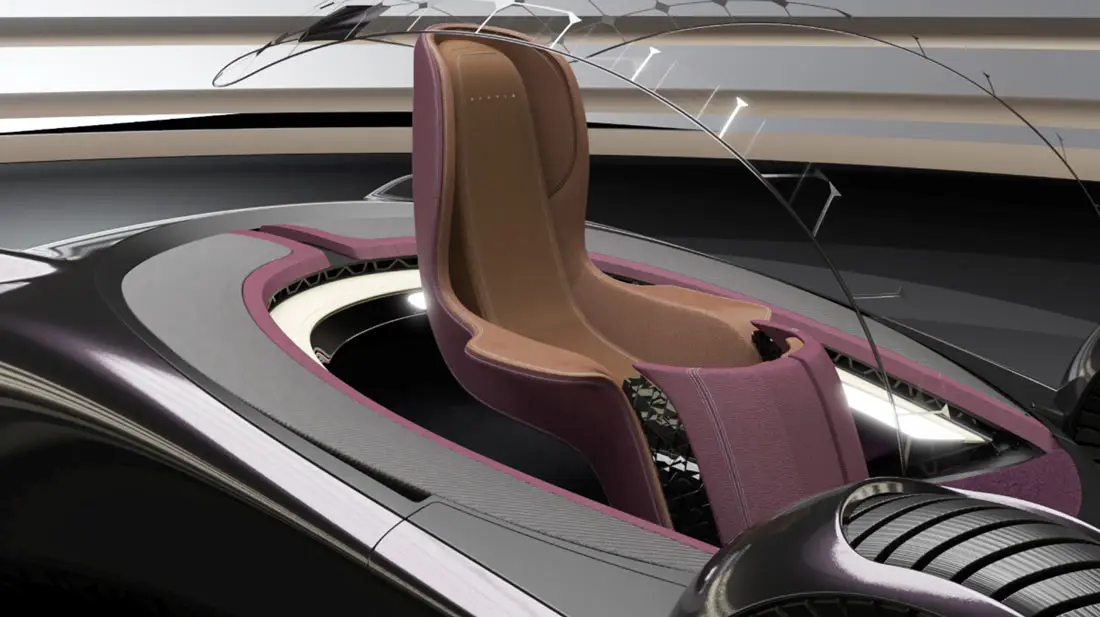
A conceptual design of a vehicle for senior citizens, part of Piloto’s senior design project at ArtCenter.
His senior project at ArtCenter – designing a vehicle for senior citizens – illustrates the way Piloto works. Before designing the car, he asked himself guiding questions: What would give the driver a sense of independence? What would provide a sense of comfort? What would bring a sense of nostalgia? He looked to nature for inspiration, zeroing in on different types of flowers and using the shapes to guide his design of the interior.
At George Fox, professor Jillian Sokso nudged him to explore his deep-story process and “planted seeds to think about what the next chapter looked like,” Piloto says. Professor Jeff Cameron also encouraged him to think about his next chapter.
At their suggestion, he pursued his second degree in transportation design. During that time he also secured an internship at General Motors as a digital sculptor intern, which eventually led to a full-time position.
Piloto can see the throughline when he looks back over his education and career trajectory. George Fox provided the perfect building-block program, he says, because he was able to explore many types of art media and then pursue his 3D design interests with the blessing of supportive professors.
Still, he wishes he’d known more about career possibilities well before college, and he wants to build awareness about what’s possible for students who love cars as much as he does.
One way he does that is by mentoring Michigan high school students interested in design to introduce them to the auto industry. As a teen, Piloto had no idea 3D digital sculpting was a career option. “I feel like being exposed to that earlier in life would have made the journey easier,” he says. “I pretty much had to figure it out as I went.”
When he mentors high schoolers, he explains what car design is and what he does as a digital sculptor, while sharing his knowledge of the auto industry. His aim: to provide career support he didn’t get. “It’s not a well-known career path for some reason,” he says.

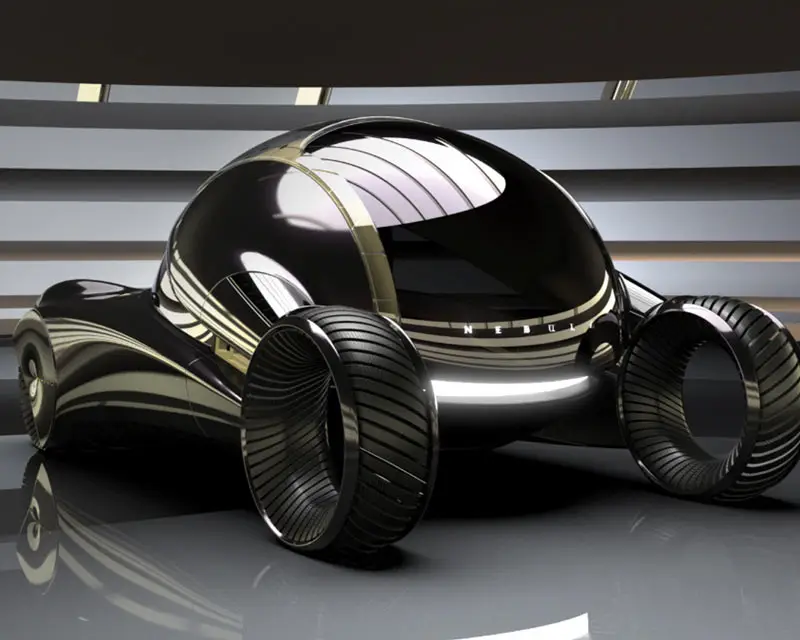
Piloto works from 2D sketches to produce realistic 3D models of vehicles, similar to these images from his student portfolio at ArtCenter College of Design, where he continued his education after George Fox.
He also explains to his mentees the need for determination and persistence. “The biggest thing is passion,” he says. “It’s not an easy industry to get into, so personal drive is important.”
Piloto suggests students learn as much as they can about the car design process from end to end, and, if possible, to devote resources to developing and honing their skills.
But most of all, he wants these students to find what motivates them and stick with it. “It’s really important to listen to that internal voice, even though it might not be what other people are doing.”
Photos by Matthew LaVere
Looking for more?
Browse this issue of the George Fox Journal to read more of the stories of George Fox University, Oregon's premier Christian university.
